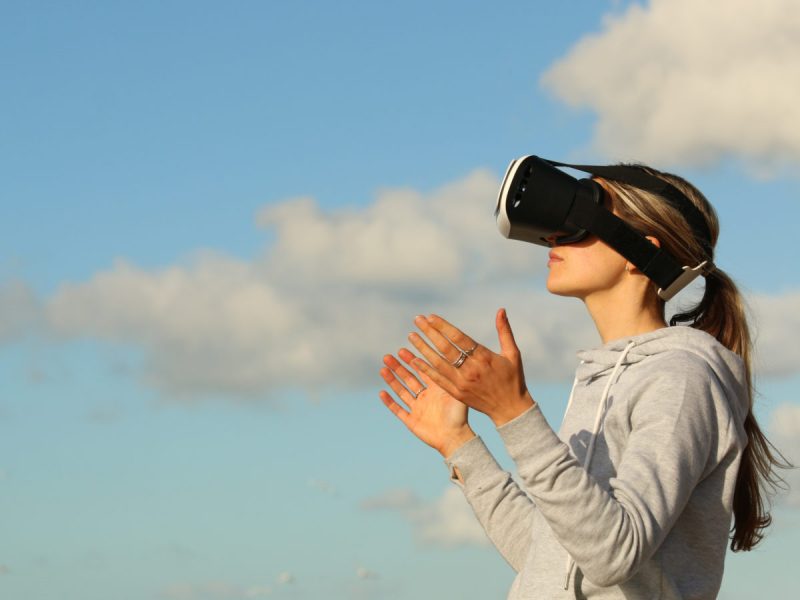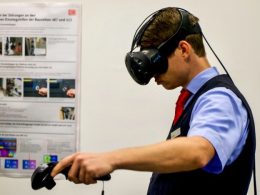The new 5G mobile communications standard is currently a key talking point in a wide range of media. But it is not just the traditional smartphone and mobile phone segment that is interested in 5G. The technology is also providing new hope in the field of virtual reality and augmented reality.
Mobile phones, cars and industry: the fifth-generation mobile communications standard is set to bring about lasting change in almost every area of technology. This also applies to the still young technologies VR and AR. 5G is eagerly awaited in both segments. This is because both technologies could benefit massively from 5G and lead to the long-awaited breakthrough on the mass market.
At Gamescom 2018, an HTC Vive spokesperson said: "From our perspective, 5G will significantly change virtual reality." Experts and companies are also hopeful online.
The three key functions of 5G are high data throughput, low latency and improved network availability. VR and AR should benefit from all three.
High data throughput: Download is not everything
One argument that is often mentioned first when listing the advantages of 5G is the high data throughput. This usually refers to high download data rates. In theory, 10 Gbit/s should be possible with 5G. For VR and AR, this primarily means improvements to existing content: 360-degree videos, for example, are currently still held back by the bandwidth, which is still too low. With 5G, more such applications would be possible in the future.
"Gigabytes are relatively irrelevant with 5G," says Fabian Nappenbach, Director of Product Marketing at HTC Europe. For him, the fast downloading of films and games is just the tip of the iceberg: "Whether you download Fornite in 10 seconds or one second doesn't make much difference". This is because it would already be possible to achieve high download rates in the LTE network. According to Qualcomm, values from 10 Mbit/s are necessary to offer an immersive experience in VR and AR. In theory, the current mobile communications standard also achieves this level.
Upload remains a question mark
More interesting in terms of data throughput is the improvement in the rate in the other direction: AR and VR applications not only have to download large amounts of data, but also upload it. The upload with 5G, like the download, should also be much higher and therefore allow a greater bandwidth of information to be sent to the server. However, network operators are currently still holding back with exact data and figures on uploading with 5G.
Low latency time
Latency is directly related to data throughput. This is the time that elapses between the input and the actual arrival of a command. This phenomenon, also known as delay, plays a much more important role in AR and VR than bandwidth. After all, it is not the amount of data that can be transported with 5G that is interesting, but the speed at which this should be possible.
For orientation: According to Qualcomm, only a latency of less than 15 milliseconds guarantees problem-free use of VR applications. If the latency is higher, the human brain notices the delay. This is particularly noticeable in so-called motion sickness. noticeable.
In the current LTE network, latency times of between 20 milliseconds and 80 milliseconds are normal. With 5G, the delay can be reduced to a stable one millisecond if the conditions are right.
Hardware should be slimmed down
On the other hand, the low latency means that the necessary computing power is no longer required in the device itself in the long term. Fabian Nappenbach explains: "The aim of 5G is to make big, fat hardware disappear." This should be possible with 5G and edge computing, i.e. the outsourcing of computing power to a nearby server.
Network availability - 5G is everywhere
Thanks to new approaches to expansion and antenna technology, 5G will also have a much smaller footprint than LTE. The advantage for AR and VR is that they can now be used wherever the new mobile communications standard is available.
Source: inside-handy / Image source: pixabay / Pexels









